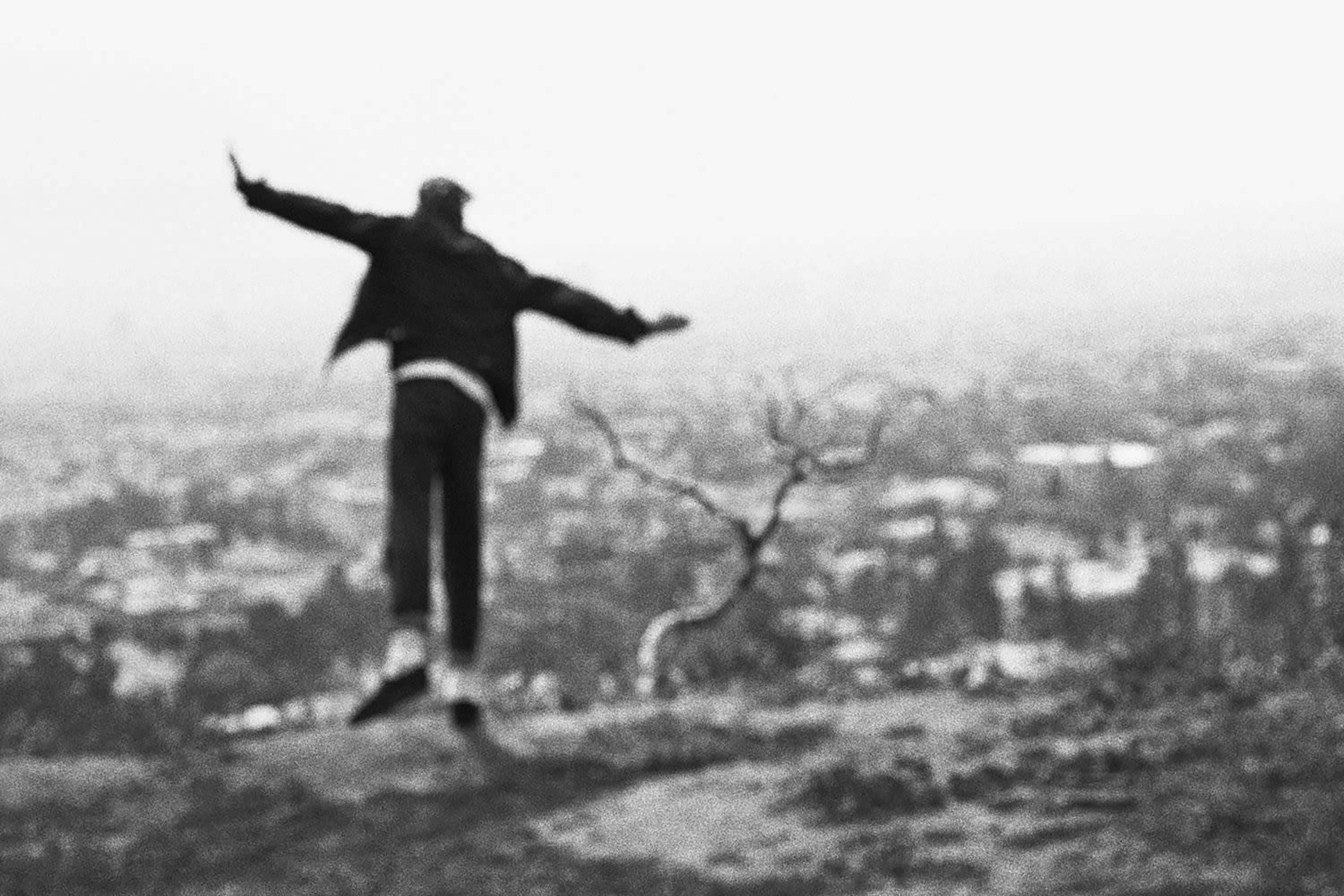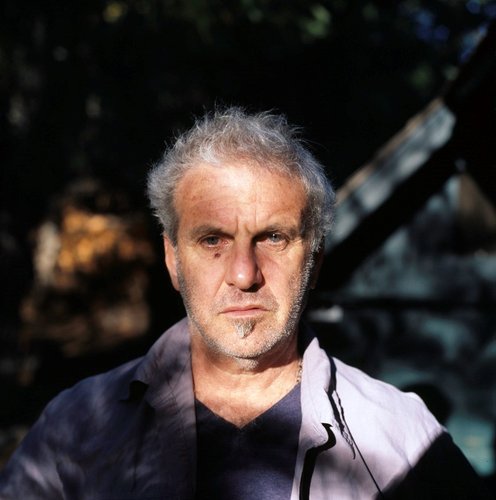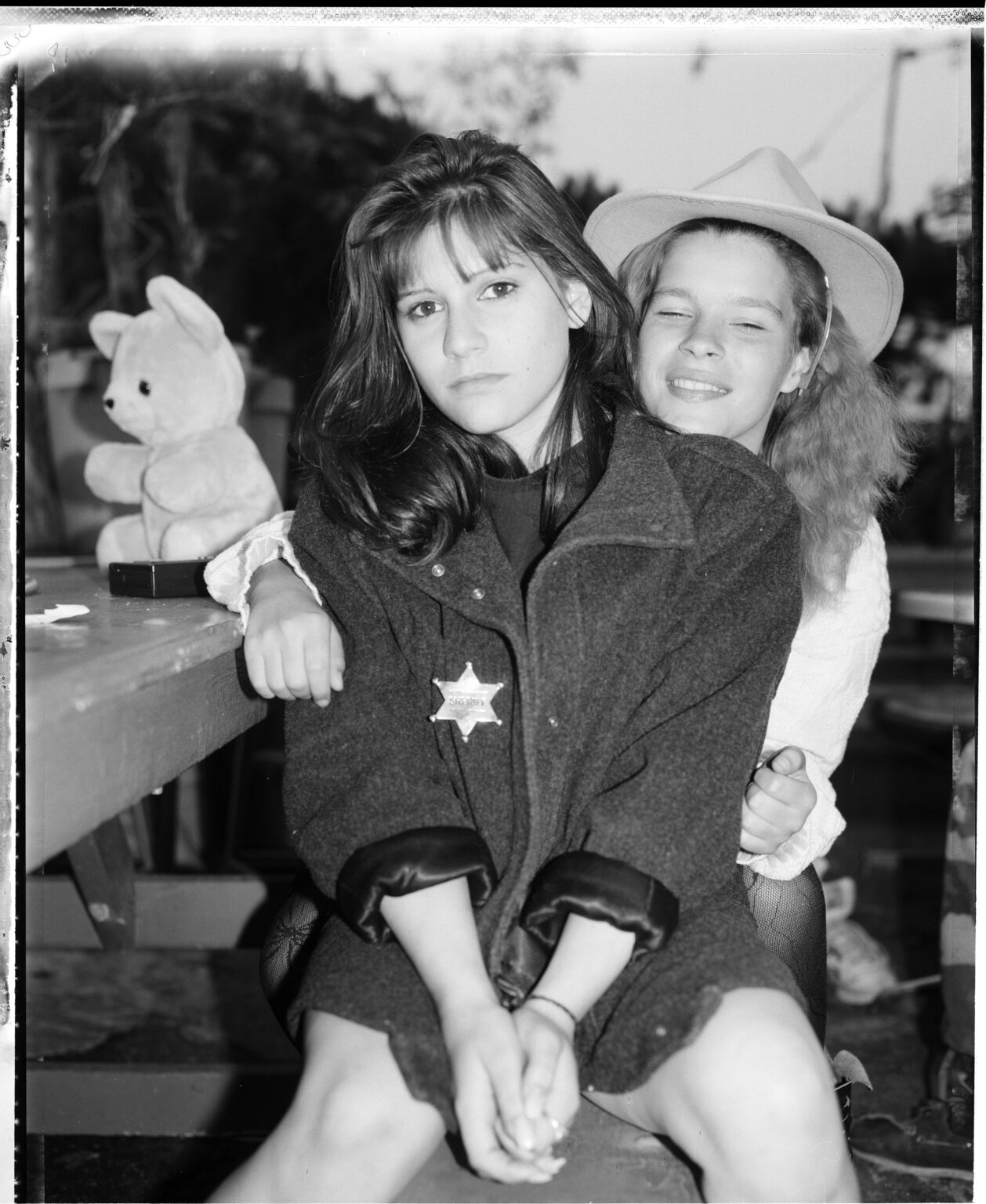Inquire
137 Reserve Club
Make an offer
Jim Goldberg
Raised by Wolves
Jim Goldberg

Jim Goldberg. Playing Chicken, 1990
Among all the endless and rich possibilities of photographic storytelling, there are few projects that have risen to match the depth and poeticism of Magnum photographer Jim Goldberg’s iconic body of work, Raised by Wolves. Long known as an innovator of narrative form, Goldberg has spent decades expanding the canon of documentary tradition, deftly combining image and text in unexpected ways and forging new potentials for complex, nuanced understandings of others.
Supported by a Guggenheim Fellowship, Goldberg began Raised by Wolves in the mid 80s and spent a decade photographing the lives of homeless youths in Los Angeles and San Francisco. Beginning by entering into communities of kids living in the streets, Goldberg forged close relationships with his subjects, making friends and intertwining himself into their lives. Such a commitment goes beyond the simple act of image-making, and enters into a far rarer integration between subject and author that Goldberg forged to unlock depths of intimacy rarely found in pictures alone.
In Raised by Wolves, Goldberg expresses narrative in multiplicities, combining his own original images with home movie stills, drawings, discarded belongings, snapshots, maps, contact sheets collage, and other visual ephemera. The work spans the chasm of fact and fiction, and includes a sprawling cast of characters who often contribute their own handwritten notes atop the images Goldberg makes of them. The resulting collection, and what many consider to be Goldberg’s Magnum Opus, is a collaborative diary of degeneracy, struggle, addiction, and hope; and one in which the photographer asks his subjects to co-write with him as a radical re-consideration of visual storytelling. Today, nearly 30 years since the first public introduction of Raised by Wolves, Goldberg’s widely acclaimed approach to photographic authorship remains a distinct and significant benchmark in the legacies of photographic documentary.
Selected Works
Jim Goldberg
101 Pictures, 1982-1986
2 ETH
Jim Goldberg
5p.m. Hollywood Boulevard, 1989
2 ETH
Jim Goldberg
Cheap Trick, 1991
2 ETH
Jim Goldberg
Dave Making Muscles for Heather, 1988
2 ETH
Jim Goldberg
Cutter, Psycho, Mohawk, John, and Vyper, 1988
2 ETH
Jim Goldberg
Baby's Arms, 1985
2 ETH
Full Collection
Artist
Jim Goldberg
1953 (USA)
-
Website_
-
Instagram_

Jim Goldberg is an American photographer and writer whose work reflects long-term, in-depth collaborations with neglected, ignored, or otherwise outside-the-mainstream populations. Goldberg is best known for his photographic books, multi-media exhibits, and video installations, among them: Rich and Poor (1985), Nursing Home, Raised by Wolves (1995), Hospice, and Open See (2009).
Goldberg is committed to examining and extending traditional documentary photography. For his first book, Rich and Poor (1985), the San Francisco–based photographer made documentary-style pictures of people in their homes, which ranged from elegant to modest to rudimentary. He further engaged his subjects in the process by asking them to write a commentary underneath their portrait; these invariably reveal concerns about class, happiness, and power. His next major project, Raised by Wolves (1995), focused on portraying street kids in San Francisco and Los Angeles, many of whom had been abused, and additionally integrated their drawings, letters, memories, and family pictures into the work.
Goldberg is part of the social aims movement in photography, using a straightforward, cinéma vérité approach, based on a fundamentally narrative understanding of photography. His empathy and the uniqueness of the subjects emerge in his works, forming a context within which the viewer may integrate the unthinkable into the concept of self. His work is in the permanent collection of The Art Institute of Chicago, The Baltimore Museum of Art, Baltimore, MD, Boston Museum of Fine Arts, Boston, MA, The Getty, Los Angeles, CA, Museum of Fine Arts, Boston, MA, Museum of Modern Art, New York, NY, National Museum of American Art, Washington, DC, San Francisco Museum of Modern Art, Seattle Art Museum, and Whitney Museum, New York, NY.
“I really feel like intimacy and trust are the guide to my work.”
— Jim Goldberg
Press + Articles
-
01
Jim Goldberg on Reflection and Reinvention
Creative Review (article)
-
02
Tracing the Roots of Jim Goldberg’s Epic “Raised by Wolves”
Blind Magazine (article)
-
03
A short film about Jim Goldberg's book 'Raised by Wolves'
Brandoooooom (video)






